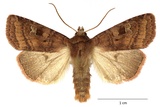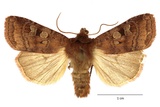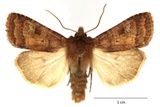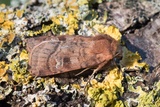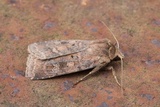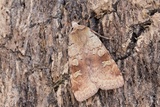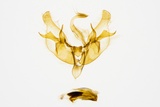Diarsia rubi (Vieweg, 1790) Species
Last modified: Nov. 20, 2025, 12:44 p.m.
A rather common species throughout Belgium.
This species is considered Least Concern according to the IUCN Red List category for Flanders 2023.
Details
- Classification
- Family: Noctuidae > Subfamily: Noctuinae > Tribus: Noctuini > Genus: Diarsia > Species: Diarsia rubi
- Vernacular names
- Gewone breedvleugeluil (NL), Small Square-spot (EN), La Noctuelle belle (FR), Rötliche Erdeule, Wegerich-Erdeule (DE)
- Synonyms
- Diarsia bella (Borkhausen, 1792)
- First mention in Belgium
- De Sélys-Longchamps E. 1857a. Catalogue des Insectes Lépidoptères de la Belgique. — Annales de la Société entomologique belge 1: 1–111. On page 81.
- Status
-
Native
Distribution
Caterpillar
Nocturnal.
Bionomics
Hibernates as a larva close to the ground.
The adults come to light and sugar. Both sexes come to rest quite quickly and sit quietly at the lamp.
Flight periods
The adults fly in two complete generations a year. Depending on the onset of mild spring weather, the first moths can be observed as early as the end of April. The flight period is from mid-May to the end of June and from the end of July to the beginning of October. When conditions are favourable, a partial third generation occurs during October.
It shows significant year-to-year fluctuations in abundance in both generations.
Observed on
- Host plant (genera):
- Taraxacum, Digitalis, Rumex and Primula
- Substrates:
- Herbaceous plants
The noctural larva lives on a variety of herbaceous plants like: Taraxacum, Digitalis, Primula, Rumex etc...
Habitat
It occurs both in moist locations but also on dryer locations like herbaceous fields near forest edges and bushes, parks and gardens residential areas.
